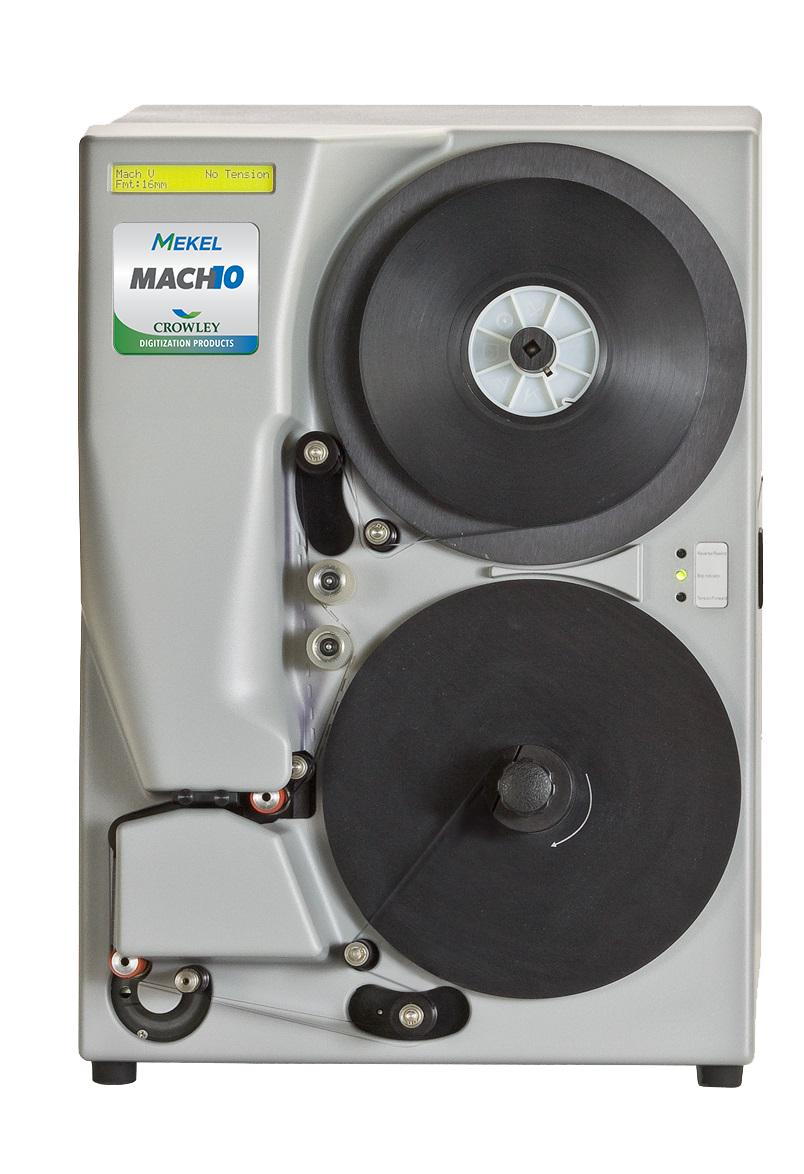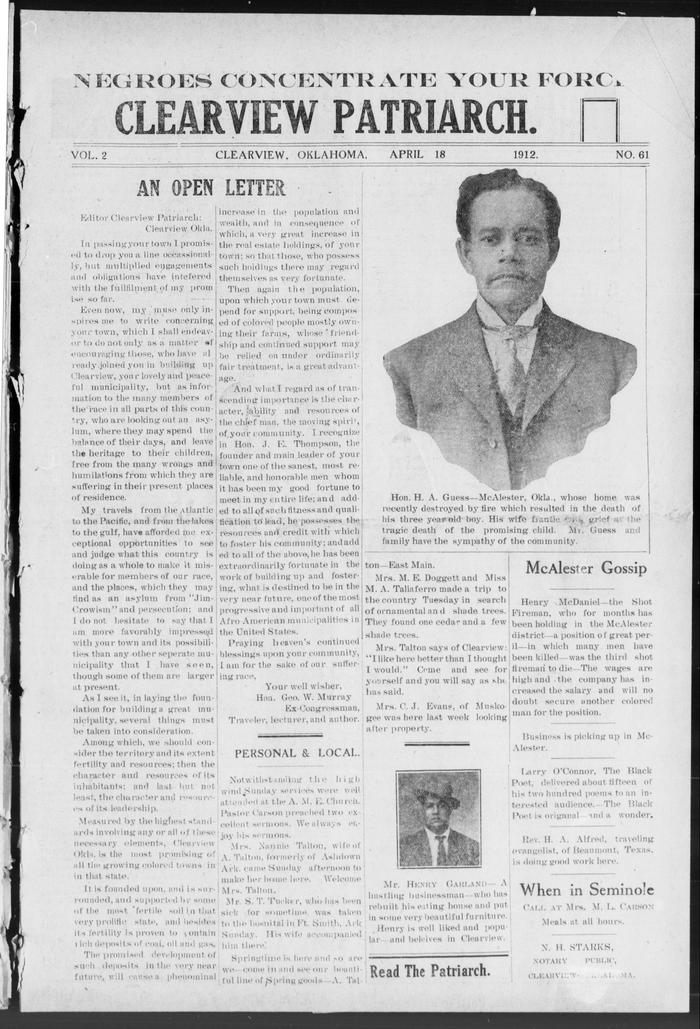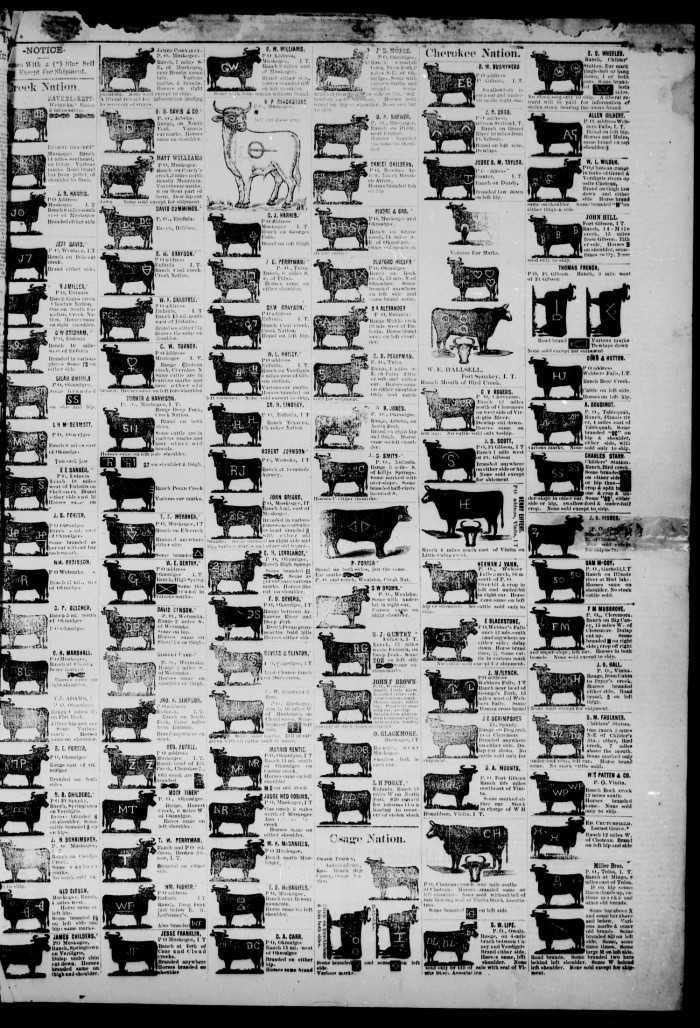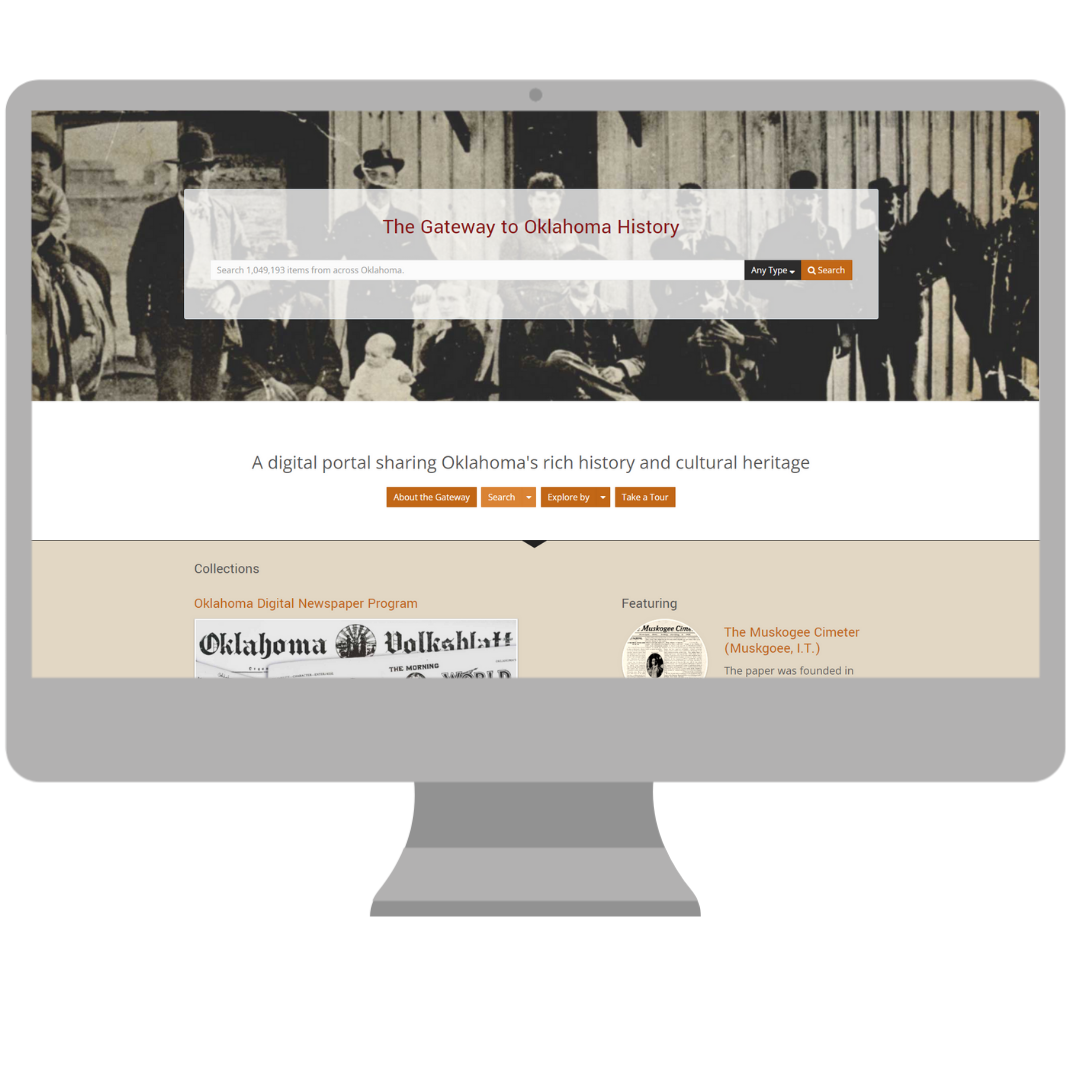A Very “OK” Newspaper
Scanning Project
Oklahoma Historical Society Makes Historic Microfilmed Newspapers Accessible Online
In the heartland of America, where rugged landscapes meet resilient people, the diverse stories of Oklahoma are now made accessible through digital newspapers.
The Oklahoma Historical Society (OHS) is taking enthusiastic steps to digitize over 4,000 newspaper titles which have been distributed in the Sooner State as far back as the 1840s (well before Oklahoma became an official state). Sarah Biller, the OHS Newspaper Department Supervisor gave The Crowley Company some background on the Society’s preservation efforts and how their new MACH10 microfilm scanner supports the Society’s mission to preserve and make historic newspaper collections accessible.
About The Oklahoma Historical Society
A call for materials was made and amplified in Campbell and other TPA editors’ publications. Fitting for this blog, complete sets of nine daily newspapers and forty-seven weekly newspapers were some of the first materials collected for the Society.
“Today the mission of the OHS is to collect, preserve and share the history and culture of the state of Oklahoma and its people,” notes Sarah. “We do that with the numerous collections, programs, research centers, museums, historic homes and military sites that we maintain across the state. Each of the 24 sites have interpretive exhibits that teach visitors about different topics of Oklahoma history and how we fit into the context of the history of the United States.”
In its 130 years as an institution, OHS has acquired millions of historic artifacts, photos, films, documents and other primary resource materials, each holding a piece of Oklahoma history.
Time Capsules of the Past
From culturally significant events like the Tulsa Race Massacre, the Trail of Tears and the Oklahoma City Bombing to the retellings of dinner parties hosted by Oklahoma’s oil-rich elite, the OHS newspaper archive provides a broad lens on the wide-scale societal landscape of the country while zooming into everyday life for Oklahomans.
When clicking through OHS’ many collection titles, it reminded me of how integral newspapers were to keeping people, communities and cultures connected before the age of TV, radio and the internet. When looking back at these publications, the existence of minority-focused newspapers is especially critical (both as they were published and now). As they were being published, these newspapers gave individuals in the community an opportunity to share news, in their own voices, which were directly impacting their daily lives. Now, these publications offer a unique view into the perspectives and experiences of marginalized communities – giving researchers critical insight into minority groups (as opposed to mainstream newspapers filled with the voices of the majority dominating the popular culture).
Sarah emphasizes, “Newspapers are incredible sources of information about the past. It is easy to forget how much the world has changed in such a short period of time. The state of Oklahoma is not very old, and most towns can be traced to a specific date with the land openings or the laying of the railroads.”
She continues, “I am often struck by that reality: traveling by wagon (or railcar) into an undeveloped land and building a town from scratch without access to a hardware or grocery store, no plumbing, no telephones, no electricity! With each newspaper title we work to digitize, we gain a better understanding and a greater appreciation of the history of that place and time. Each town has its own story, and it is worthwhile to collect, preserve and share them all.”
Other interesting publications include the Beaver Herald which was founded 20 years before Oklahoma became a state and Our Brother in Red which was a paper for Methodist missionaries.
Scanning Okla-history

OHS began its newspaper scanning efforts 15 years ago with the small – yet impactful – goal of providing digital access for researchers.
In the first 14 years of the project, OHS captured four million newspaper pages and have recently retired the two microfilm scanners that led the first leg of the project due to age and computer issues.
When looking for a new scanner to continue the project with strength, OHS sought robust production throughput and high-quality image conversion. Sarah elaborates, “The OHS houses over 50,000 rolls of microfilm and we are working toward making as much as possible available to our patrons in a digital format. As the stewards of our state’s history, we must always consider preservation. For that reason, we strive to create the highest quality scans possible, so the images will be usable for as long as possible.”
OHS considered a variety of scanner models, including a newer version of their past scanner, but ultimately purchased a Crowley-manufactured Mekel Technology MACH10 microfilm scanner. In addition to satisfying their goals for newspaper scanning speed and image quality, the new microfilm scanner also appeases a major need. “A significant factor in why we chose the MACH10 is the external PC. In the past, our scanning operations have been completely shut down because of hardware problems,” Sarah impresses.
MACH10 features such as automatic aperture and focus have helped OHS maintain consistent image quality across rolls. “It also saves several minutes of adjusting,” Sarah adds. “If we can squeeze a few more minutes out of every roll, it adds up and can really make a difference when we are trying to digitize several hundred rolls every year. The speed of scanning is also much faster than our previous scanner. The auto de-skew and auto cropping functions in [the] QuantumProcess [software] have also helped decrease the amount of time we have to spend editing the images individually.”
The Gateway to Oklahoma History
The Gateway to Oklahoma History, a website where digital images from newspapers and other archival collections are stored (including millions of historic photographs, manuscripts, journals, books and audio and video recordings). The OHS based the Gateway on the University of North Texas’ (UNT) Portal to Texas History. The two entities began their partnership when they connected through the Library of Congress’ Chronicling America newspaper project. UNT’s Mark Phillips and their Digital Projects Unit worked to create the Gateway to Oklahoma History which provides free digital access to Oklahoma resources using the same search engine and structure used by the Portal. [Side bar: UNT also happens to be a client of Crowley’s Digitization Services division).
“We have found that digital access to our records is greatly increasing our ability to help our patrons,” notes Sarah. “We can help people find what they are looking for much faster than before and are finding more information than was previously possible. Keyword searches of digitized materials produce much more robust results than looking through a roll of microfilm. This allows us to share a more complete history.”
The Sooner, the Better: Dive into Oklahoma’s Newspaper Legacy
Now that many of their newspaper collections are captured, OHS is working with local publishers to obtain permission to digitize copyrighted years of newspapers and add them to the Gateway. In tandem, they are prioritizing projects with grant deadlines over in-house projects for internal research.
The best part of this project is that the information is open to the public. Take a moment and digitally roam the news out of the Oklahoma territory, browse classic mid-century advertisements or search for information on a long-lost Oklahoman relative. The sooner you learn about the Sooner State, the happier (and more knowledgeable) you’ll be.
INCREASE ACCESS TO YOUR NEWSPAPER COLLECTIONS
Crowley’s trusted scanning hardware, experienced imaging experts and network of industry professionals can support first-time and ongoing digitization projects for any collection size or type. For more information on microfilm newspaper scanning products and services available from The Crowley Company, please call (240) 215-0224 or click here.




